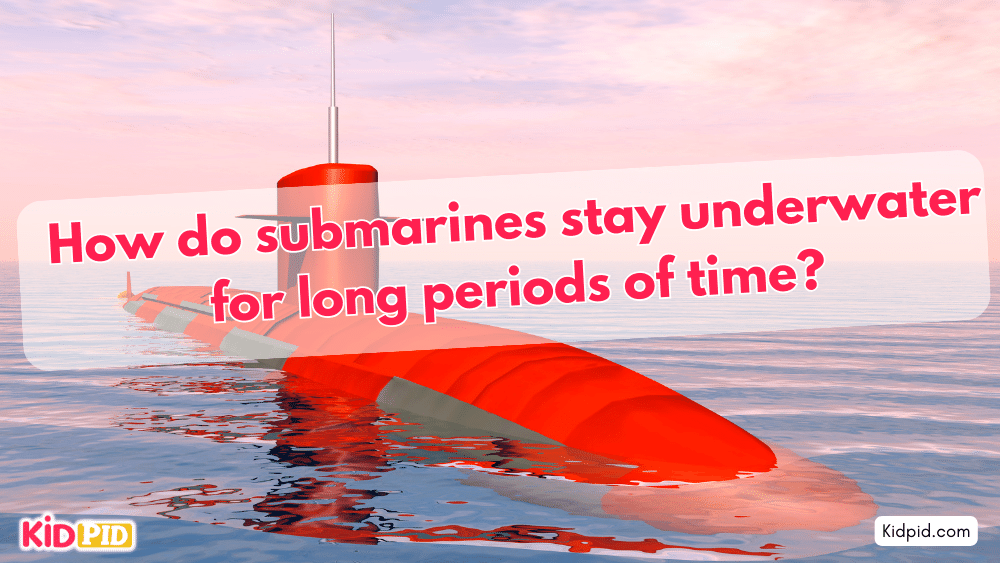Submarines stay underwater for long periods by using ballast tanks that are filled with water to increase weight and dive or filled with air to decrease weight and surface. They are powered by nuclear reactors or diesel-electric engines, allowing them to operate underwater for extended periods without the need for frequent resurfacing.
MCQs
1. What do submarines use to move forward underwater?
A) Paddles
B) Propellers
C) Balloons
D) Legs
Answer: B) Propellers
Explanation: Submarines use propellers powered by engines to move forward underwater. The spinning blades push water backward, propelling the submarine forward.
2. How do submarines change their depth in the water?
A) By flapping wings
B) By changing the air in the tires
C) By adjusting the amount of water in the ballast tanks
D) By waving a magic wand
Answer: C) By adjusting the amount of water in the ballast tanks
Explanation: By adjusting the amount of water in the ballast tanks, submarines can change their buoyancy, which allows them to move up or down in the water.
3. What is the primary source of oxygen for submarines when underwater?
A) Plants
B) Oxygen tanks
C) Windows open to catch air
D) Fish
Answer: B) Oxygen tanks
Explanation: Submarines carry oxygen tanks or have systems to produce oxygen, ensuring the crew can breathe while submerged for long periods.
4. How do submarines see what’s ahead of them underwater?
A) With a periscope
B) With a telescope
C) With glasses
D) With a flashlight
Answer: A) With a periscope
Explanation: A periscope allows submarines to look at the surface while remaining underwater. It uses mirrors to reflect the view down into the submarine.
5. What technology allows submarines to map the ocean floor and detect other objects underwater?
A) X-ray vision
B) Radar
C) Sonar
D) GPS
Answer: C) Sonar
Explanation: Sonar uses sound waves to detect and locate objects underwater, helping submarines navigate and map the ocean floor.
Read More
